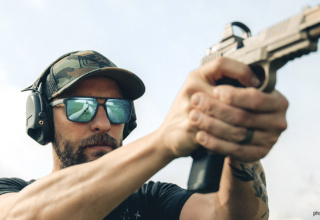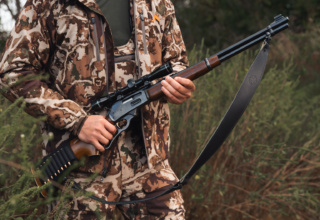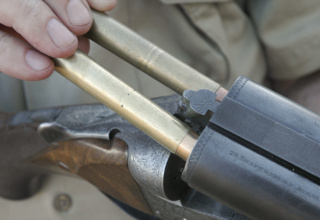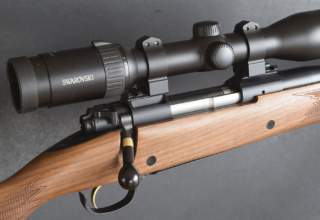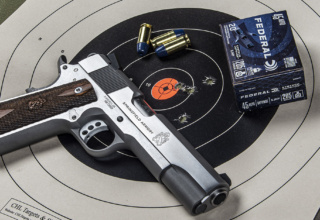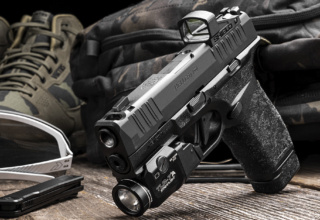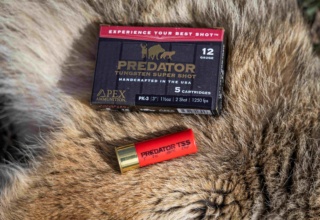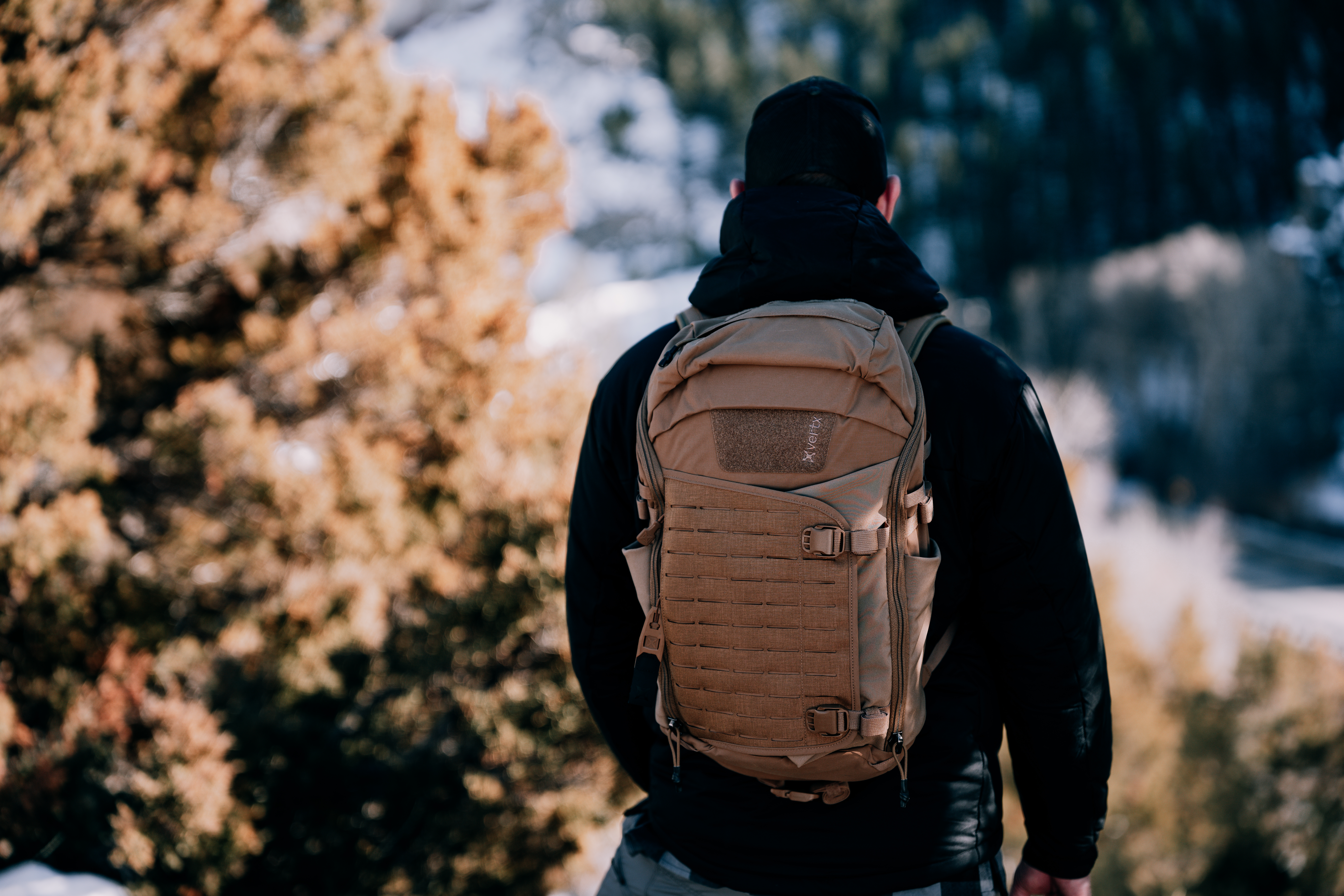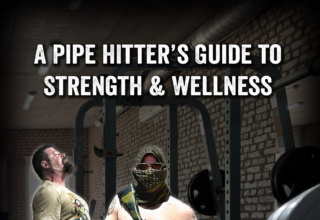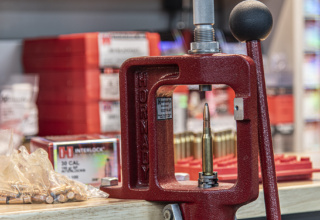A holster isn’t a pocket. You put it where you want to find your pistol — fast and always.
by Wayne van Zwoll
The Model of 1917 rode belt-high, with a gentle forward rake. It felt good, as if my hip had been built for a revolver and too long denied one. Before I had cartridges to slip into that .45’s half-moon clips, I’d drawn the old DA a hundred times. Its hand-tooled holster came from a talented leatherworker. He’d shaped the cowhide to fit the steel, not just corral it. The Colt slipped easily in and out but didn’t rattle or squirm. To protect its muzzle, the holster was closed a nickel-pinch below it. Dust and water left through a hole in that plug.
That .45 and its fine leather were gone before I knew how stupidly a young man can behave at a gun show. Other revolvers have come my way since. Autoloaders, too. Almost all got leather for holsters. Sure, Kydex is a worthy option — in some applications better. “In triple-digit temps,” a Miami patrolman pointed out, “leather can stick to your body. Sweat makes leather stink. And leather isn’t easy to wash.”
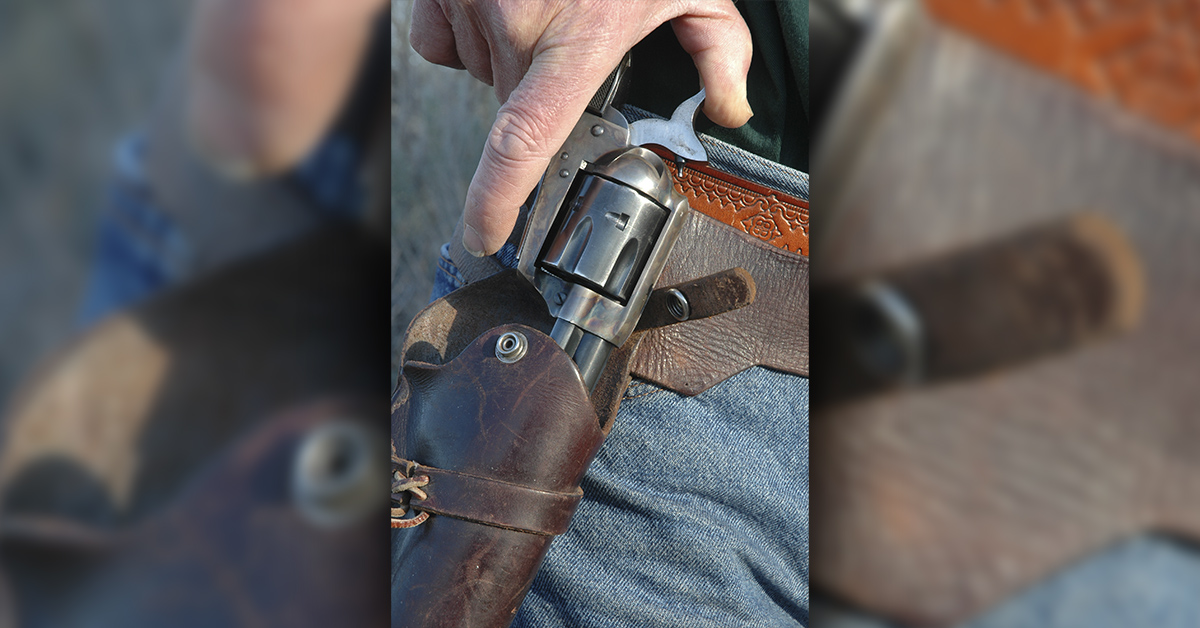
Still, like walnut rifle-stocks, leather holsters are traditional, natural, warm to the touch. Durable and protective, they have a rough inner surface that grips pistol steel with just the right amount of friction. The finished side of polished leather is handsome, slips easily against clothing, and sheds water like glass.
Now mainly a product of the meat-packing industry, leather also yields boots, belts and bridles, saddles, slings, sheaths, scabbards, and shooting jackets. Leather-looped panniers bring game off the hill on Decker and sawbuck frames cinched by leather rigging to the backs of mules. Shaved leather covers scope lenses and recoil pads. Leather wears scars well and ages gracefully.
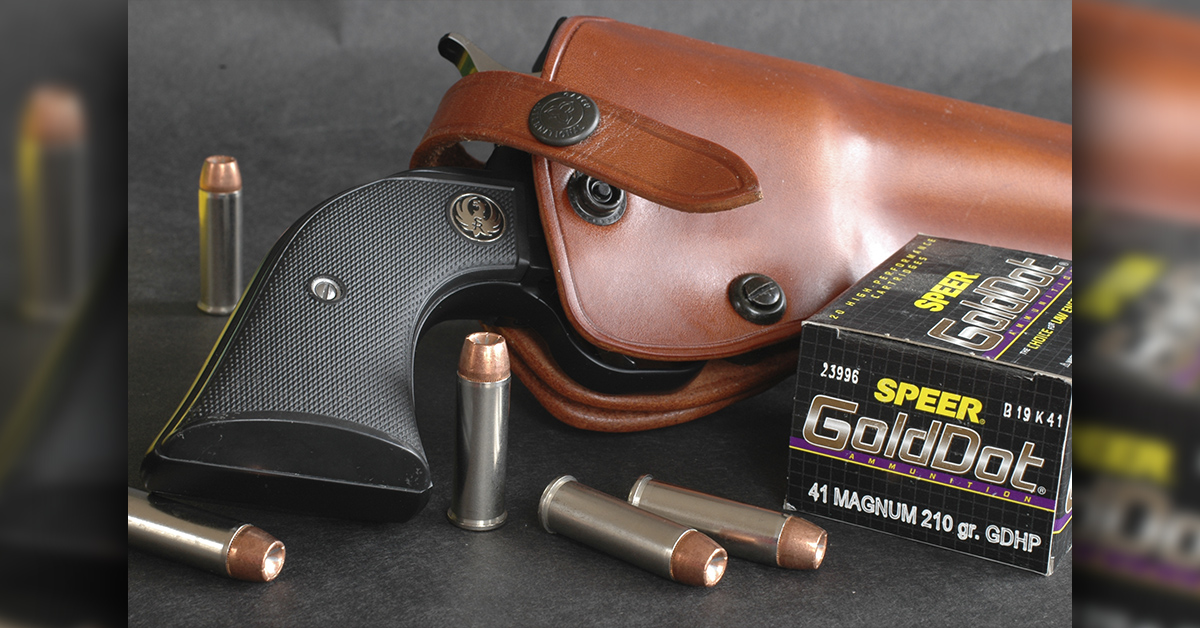
Leather dates to very early manuscripts. In Genesis, chapter three: “The Lord God made garments of skin for Adam and his wife and clothed them.” Spanish caves with evidence of early hominid life have yielded hide-scraping tools. The centuries since have taught us how to make leather ever more attractive and useful. We can make it pliable and finish it stiff, give it rough and slick surfaces, sew it, mold it, color it, and join with other materials. We’ve found ways to preserve and renew it, even keep its pleasant smell.
Talking with people who work with leather, I learned that animal hide has no fun in the transition. First, caustic salts leave it hard as plywood. Wet-salted hides cure in stacks for several weeks. Brine, with disinfectant in a vat, speeds that process; salt saturation occurs in 16 hours. A water bath removes the salt and blood. Lime solution with a pinch of sodium sulfide loosens hair for mechanical de-hairing. The skin is then scraped, died, stretched, and sandpapered. It may be treated with heavy metals. De-liming follows, in acid solution. “Bating” enzymes make the skin soft and flexible.
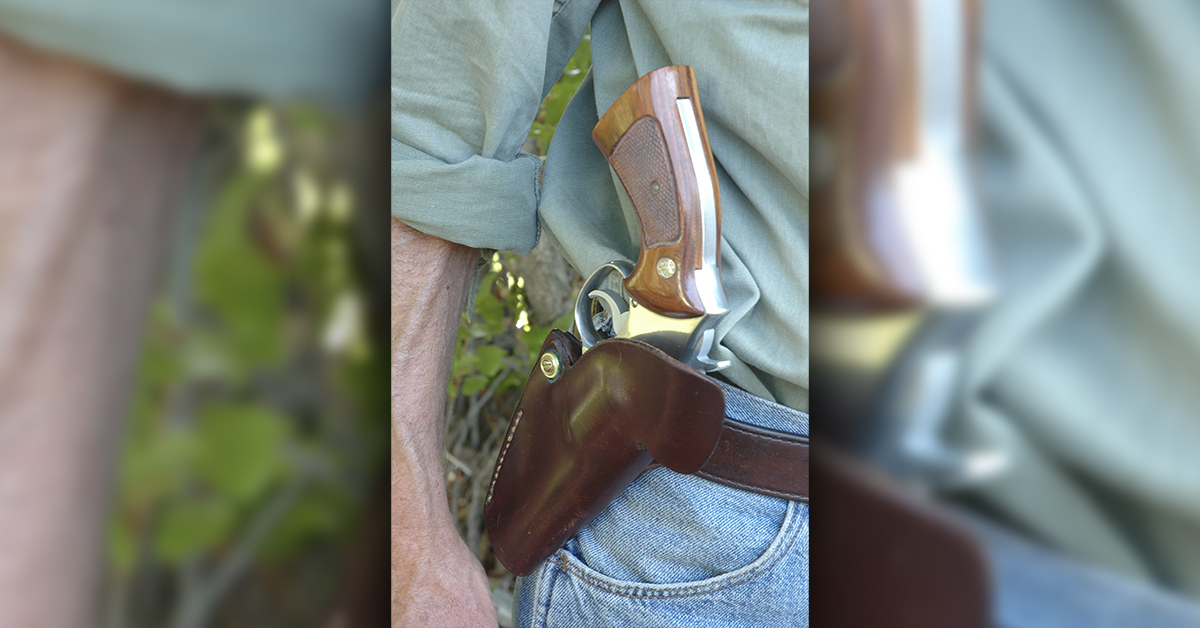
Tanning stops decay and prevents shrinkage. Vegetable tanning produces firm, stretch-resistant, water-repellant leather. Tannin comes from chestnut wood, also the bark of oak and hemlock; but about 80-percent of tannin used in leather-making comes from foreign plants. While vegetable tanning is a weeks-long process, chrome tanning can be done in a day. A solution of salt and acid shrinks the leather, so it better endures heat and resists wear. It is then tumbled in a basic chromium-sulfate solution. Some leather for some tasks gets both treatments, chrome tanning first.
After bleaching, raw vegetable-tanned leather is immersed in Epsom salts, oils, and glucose, then in emulsions of soap and grease, sometimes wax. Chrome-tanned leather may be split or shaved to reduce thickness; then it is buffed or sanded to erase surface flaws. Rollers bring firmness and a polished finish to lightweight leather. Waxes, shellacs, and varnishes add gloss. Buffing the flesh side of leather raises the nap to produce suede.
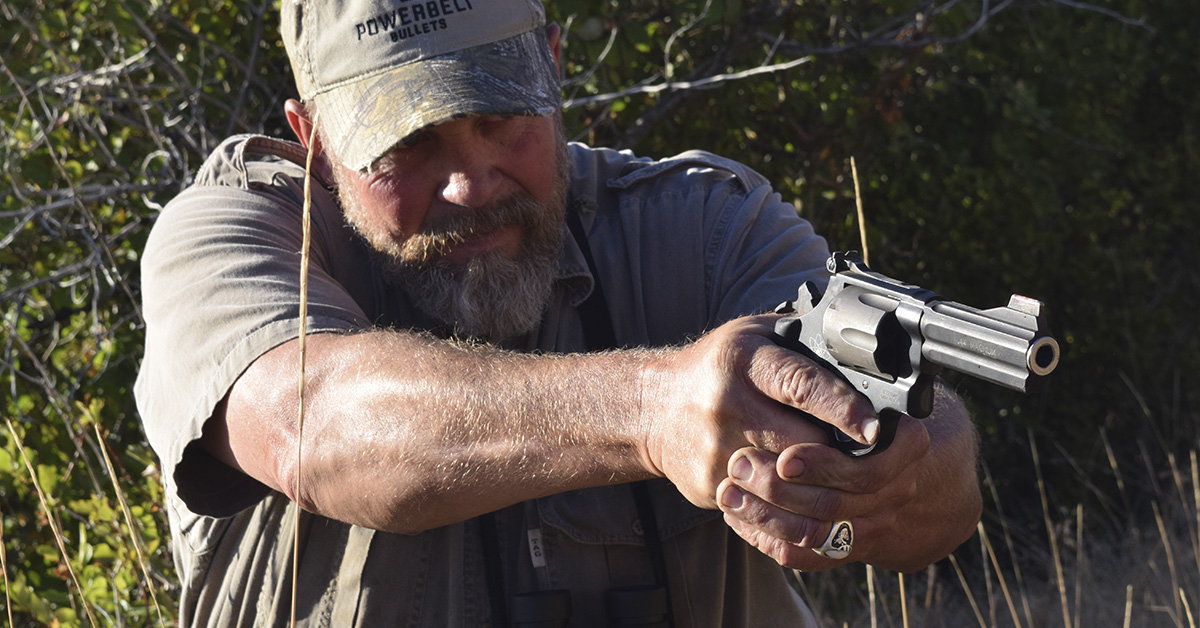
For the guns….
Leather holsters came to Hollywood before film got sound. From Tom Mix and William S. Hart of the silent screen to Gene Autry and William Boyd’s Hopalong Cassidy in the ’30s, to James Arness as Matt Dillon in 1955’s debut of Gunsmoke, gunslingers owed their fast draws and galloping get-aways to cowhide. The law on their heels was equally indebted. Less celebrated: the great cattle herds cutting dusty thoroughfares from prairie ranges to Midwest stockyards and tanneries!
These days, the telegenic low-slung hog-legs on broad belts with cartridge loops show up mainly at Cowboy Action events. They’re impractical for carry just about everywhere else.
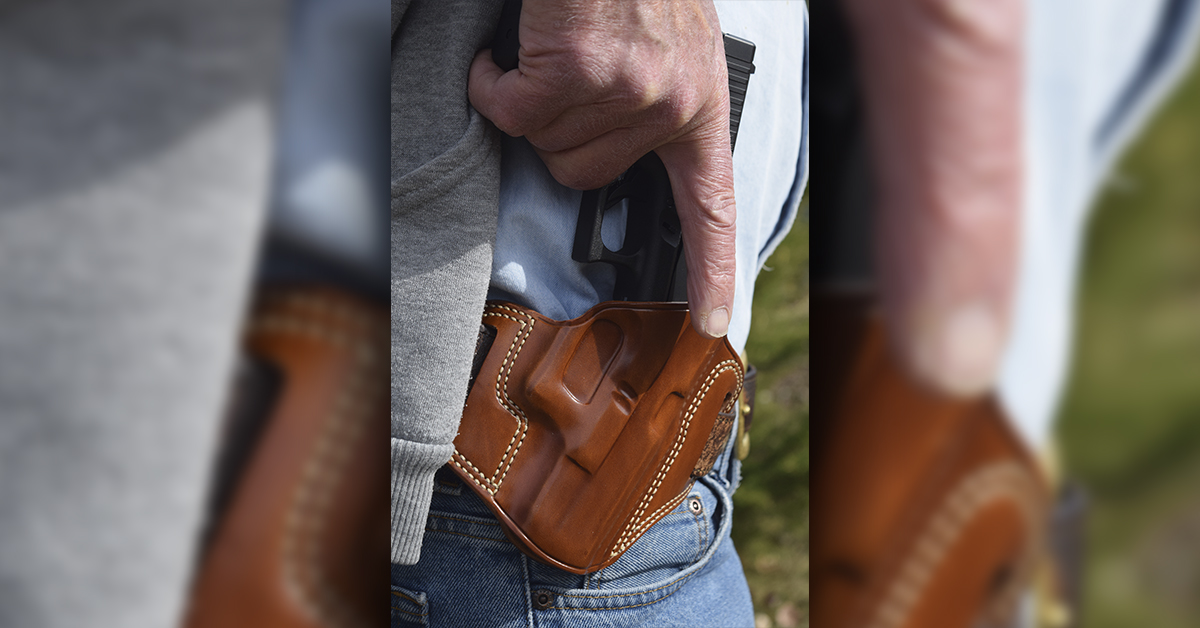
Whatever the handgun’s purpose — field carry, personal protection, or law enforcement (LE) — that of a holster is the same: to secure the firearm, make it ride comfortably, and afford quick, easy access to it.
Leather destined for holsters must be fitted to the gun. Factories do this for you, with molds that replicate the forms of specific handgun models. Still, it’s best to slide any gun into new leather gingerly, until, like shy adolescents, the two decide hugging is OK. A couple of days cuddling your Colt will join the holster to it. (A knife sheath begs more get-acquainted time, as knives are lighter, and sharp. A friend thrust his DiamondBlade knife through a virgin sheath when he united them briskly too soon.) Wetting leather helps it conform, but that’s harsh treatment.

Which holster design is best depends on the pistol and its likely use, also on your body and habits. IWB (inside the waistband) holsters get a lot of attention now because concealed carry is newsworthy. It can also be uncomfortable, and impractical for some activities. It limits you to short, slender, lightweight handguns. The revolvers and autoloaders carried by most outdoors-people — handguns that get more use than pocket models for emergencies — ride in OWB holsters or in chest or shoulder holsters.
Galco is one of several worthy gun-leather brands. Most of my holsters are Galco, partly because there’s a tremendous selection of styles and gun fits, partly because the quality is consistently top-shelf — while pricing is quite reasonable. Galco began making holsters in 1970 as The Original Jackass Leather Company in Chicago, where founder Richard Gallagher built shoulder rigs of horsehide for police. When the pilot of television’s Miami Vice aired in 1984, Vice producers contacted Galco, then three years under its current name and in a new Phoenix factory. “We need a holster to hide Don Johnson’s Bren 10 under his Armani suit. Can you help?” Gallagher tweaked a Jackass design to come up with the Miami Classic.
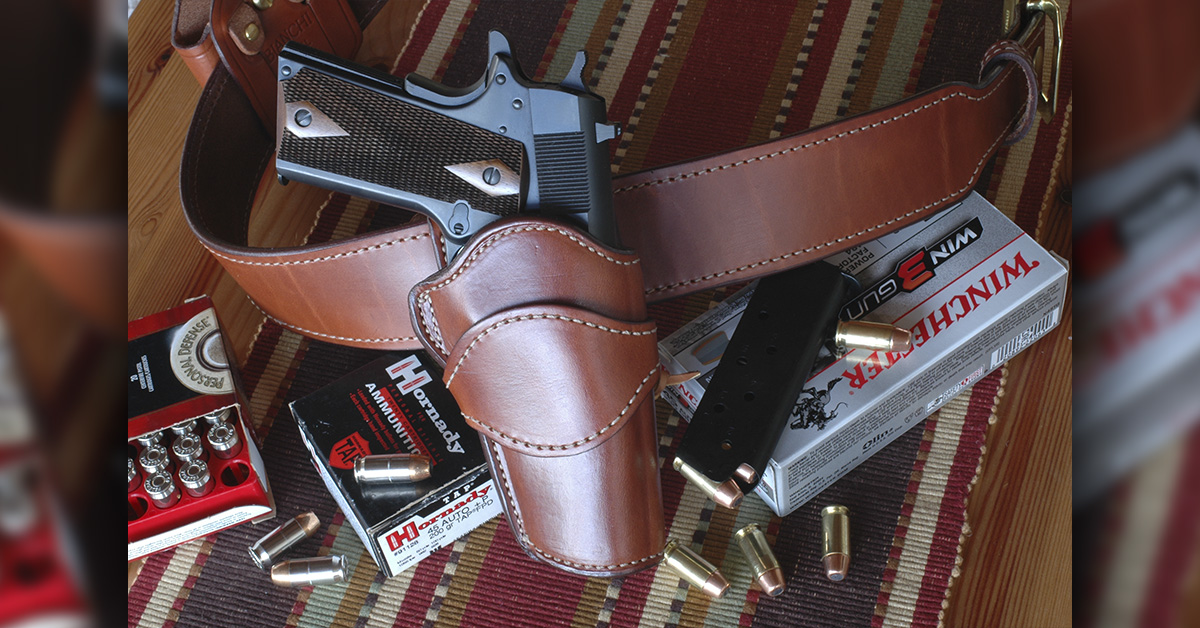
Mike Barham has represented Galco International nearly 20 years. “The Classic is still among our top sellers,” he says, “but we’re not in business to serve television stars. We have dozens of designs for everyday carry and field use, with handguns from SIG’s P365 to S&W’s long-barreled .500.” One of my favorites is the Combat Master, a hand-molded belt holster of traditional pancake design. The premium steerhide is double-stitched with heavy waxed thread and fits belts to 1 ¾ inches wide. It fully protects the pistol, while a butt-forward cant and sculpted mouth permit instant firing-grip hand position. There are no straps and buttons. Says Mike: “We recommend the Combat Master for USPSA and IDPA competition.” Its “fits” list includes pistols from 25 manufacturers, AMT to Walther — 53 handguns by S&W alone!
Bianchi, another legendary name in leather, also got its start in LE. California police officer John Bianchi designed a duty holster that would spawn the firm’s 5BHL model, still made. Conflict in Vietnam inspired the X15 shoulder rig. Front-break belt holsters followed. In ’79, when John founded the Bianchi Cup Invitational International Pistol Tournament, the company announced “ballistic weave” nylon. Five years later its M12 became the first new holster for U.S. Armed Forces in decades, replacing leather. But leather remains a Bianchi focus, with holsters for 1911s and DA and SA revolvers. The Cyclone 111 suits cross-draw carry, too. My Wild Clearwater hip holster, with heavy duty belt, fits a 1911 like a second skin. It’s a beautiful rig, with a touch of retro in cut and carry.
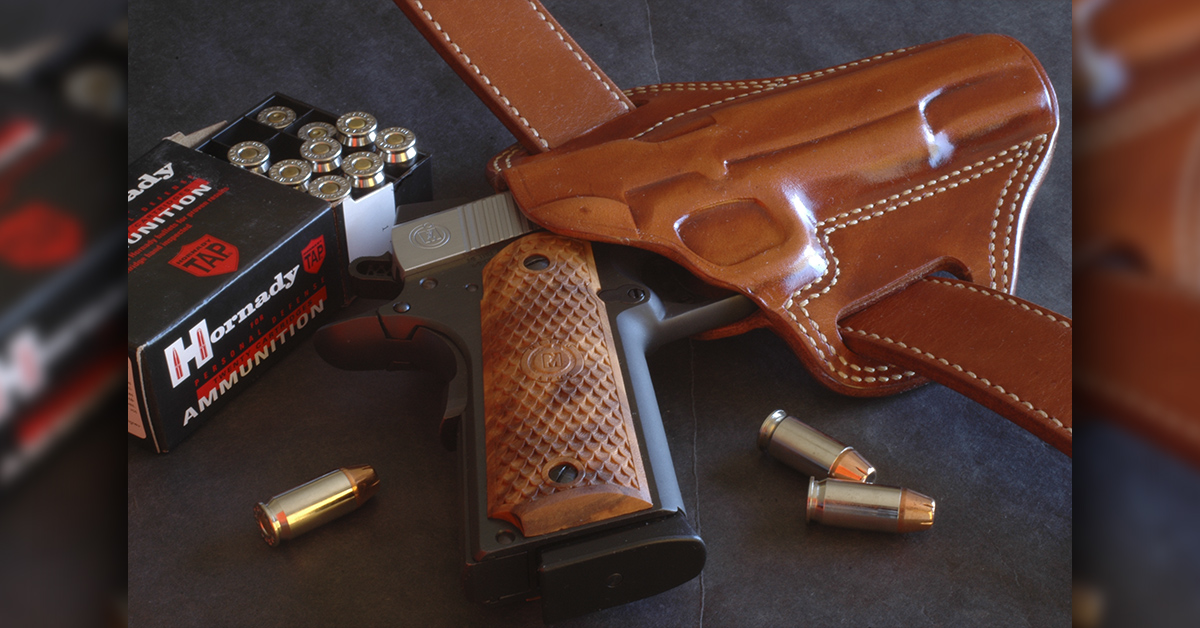
Holster-maker Triple K got its start on the heels of WW II in a San Diego department store run by Herman Krasne and son Leo. When Leo’s son Jerry joined the enterprise in 1952, he sold sporting goods and launched a new firm to make aftermarket magazines. Triple K Mfg. Co. (for his children, Kim, Kurt, and Karen) grew its holster selection in the 1980s, then shed the retail business to focus on catalog sales. The suede-lined, thumb-break K570 Woodsman, a top pick for revolvers, works for cross-draw carry, too.
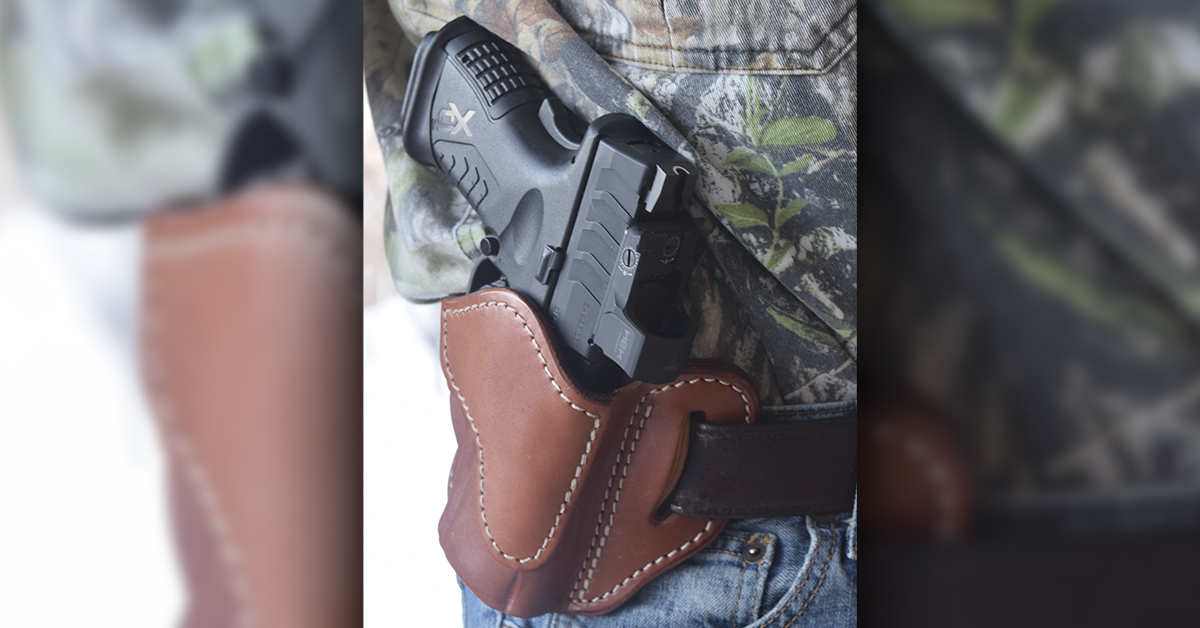
Options and Checklists
Other names in leather include Don Hume, whose reinforced thumb-break H721 holster is offered for scoped revolvers at a $15 up-charge. In Amityville, New York, DeSantis Gunhide dates to the 1970s. It has equipped U.S. Air Marshals, the FBI, and the Secret Service. Its Thumb Break Scabbard (for cocked and locked 1911s) and Top Cop (open-top, reinforced) models are rightly popular. As a wildlife agent, I carried my S&W 66 in a Milt Sparks hip holster. Now an OWB holster from 1791 Gunleather cradles my Springfield XD-M 10mm Elite. Beautifully made of heavy steerhide, it puts the trigger 1 ¼ inches above beltline. The Firefly red dot sight just clears the holster mouth.
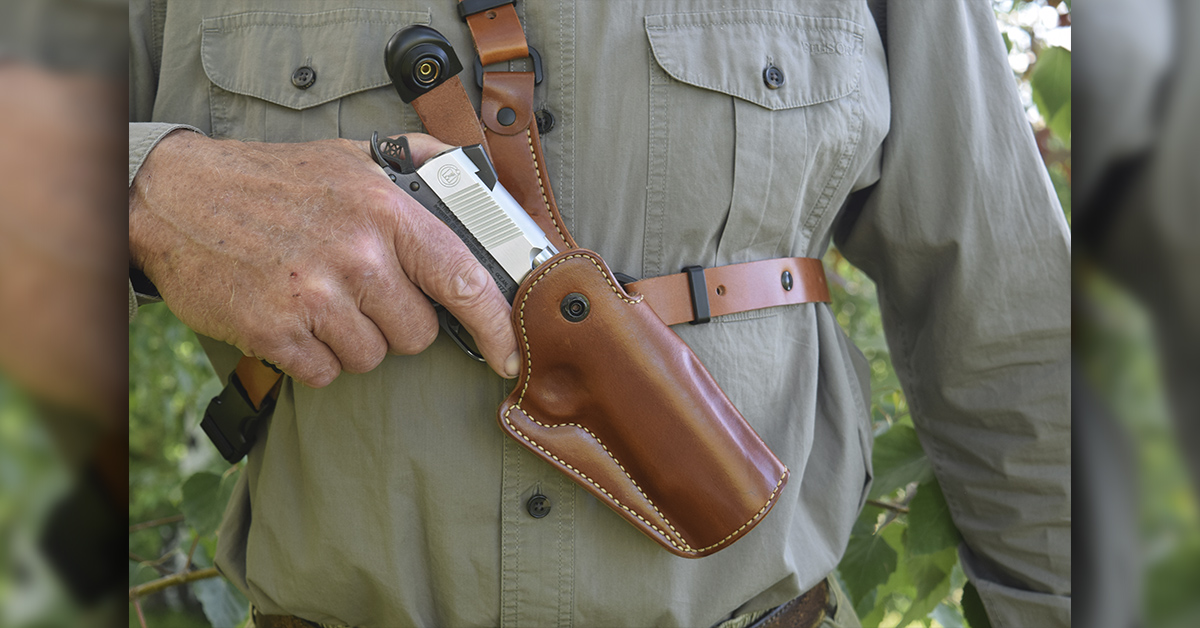
Belts have borne handguns since before cap-and-ball days. But heavy, long-barreled pistols have also been slung across saddle pommels. These days, many handguns suitable for hunting are too big and heavy for comfortable belt carry, some even for a shoulder holster. A 30-ounce pistol is about all I want tugging at my hip on hikes. For 1911s and big-bore revolvers, a chest carry suits me better. It distributes the weight across more muscles and bones. A chest-borne pistol isn’t in the way when I climb over blow-downs or struggle on steep talus. And there’s no interference with a rifle or bow, whichever side it’s held. My binocular rides high enough to clear a pistol whose breech rides at the bottom of my sternum.
A handgun carried to ward off a bear must be where you’ll find it quickly. A draw from the chest can be as fast as one from a high-ride hip holster, with less body movement. If by grim chance you fall or are taken down, your hands will naturally go to your chest (where you’ll also carry bear spray). Protecting your vitals, you’re within reach of a chest holster. Unzipping a cold-weather jacket to chest level can be easier than freeing it from around a pistol in a belt holster. And a chest holster is easy to keep out of the weather.
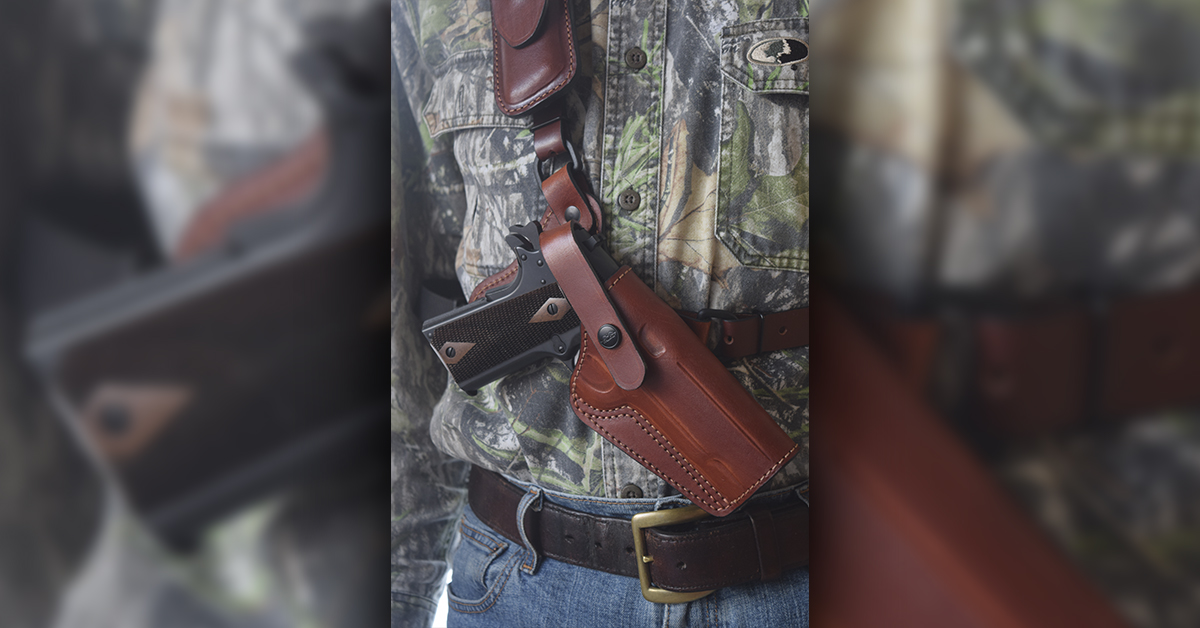
Galco’s Great Alaskan is one of my favorite chest rigs. Its lightweight straps are broad across the shoulders, with a pinch-release polymer snap on a nylon torso tag. A leather retention strap with a snap allows “cocked and locked” 1911 carry. Listed for pistols and revolvers, The Great Alaskan chest holster accommodates matching pouches for magazines and loose ammo.
Oddly enough, a Slovokian gun-leather firm by the name Falco makes a similar chest holster. It is well crafted of fine leather. Falco takes custom orders and responded promptly to mine.
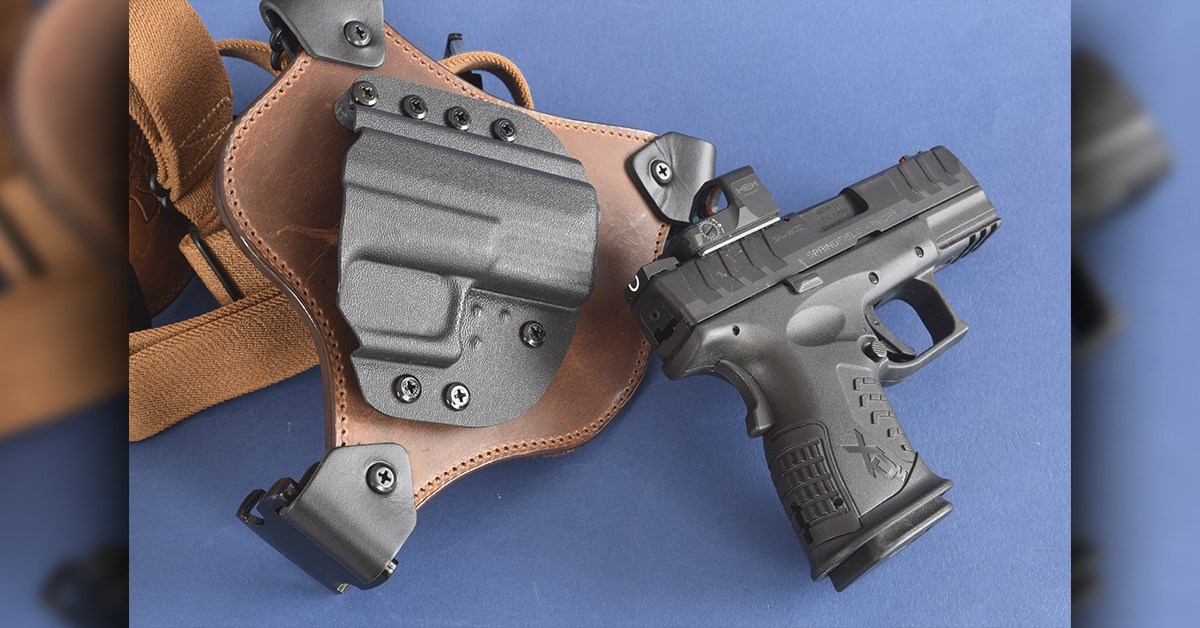
Recently, I tried a chest rig from CrossBreed. It carries my XD-M Elite securely and comfortably, thanks to the lined, broad leather backing on its molded Kydex holster. Three adjustable straps join in a leather “pancake” at the back. The holster is easy to position for the “high ride” I prefer. A pinch-release frees the torso strap for convenience, on and off.
A few things to consider when a holster catches your eye:
- Is it made specifically for your pistol (model and barrel length)? It should be! Holsters not made to fit won’t! Get one that does!
- When ordering, specify that you’re right- or left-handed. If leather color is an option, specify that, too.
- Do you wish to carry strong-side or cross-draw? Some holsters are designed to let you do either. Others are dedicated (Triple K’s 671 for cross-draw).
- Most belt holsters have a forward cant to speed your firing grip and draw. (While DeSantis specifies a 15-degree cant for its OWB Sidestep, the angle isn’t always given). Some belt slots let you adjust angle; but it’s best that you try several holsters and angles before you buy.
- Let the holster-maker know if you plan to use an optic on the pistol. Some holsters are compatible or can be special-ordered with an allowance for that sight.
- Is lining important to you? Unlined holsters work fine and are more widely available. But suede-lined holsters may be listed for your pistol.
- Check that belt slots are to your liking. A slot for 1 ¾-inch belts accepts most heavy gun-belts nicely.
In sum, a holster’s job is to keep the gun secure but quickly accessible and easy to carry. Leather and Kydex arguments aside, a holster that practically pops your pistol free at a touch is no more practical than one you must fight on the draw. Think of the pistol as a football. The holster must hold it against the bumps of field carry, but ensure a quick, Superbowl-sure handoff.

Leather Care
As for holster care, the gurus I’ve consulted agree that leather should be stored away from warm, sunlit places that can dry it out, also that hanging it where air can circulate helps prevent rot and mildew. A fellow who’s manufactured Harley-Davidson saddlebags told me to “keep leather supple but not over-oiled. Air-dry wet leather slowly, as direct heat can cause shrinking and cracking.” A boot-maker advised brushing off dirt before it can penetrate and abrade. “Scrub leather with saddle soap on a damp cloth, then wipe the lathered surface dry and apply wax or Neatsfoot oil, depending on the leather.” CrossBreed has supplied small bottles of its own leather preservative. For hard-finished leather, you can’t go wrong with properly tinted shoe polish! Still, DeSantis maintains that in ordinary conditions its holsters need no finish treatment, and that even the best treatments can soften leather. CrossBreed notes its product for polished leather is meant only for the glossy side; the rough side is best left alone.
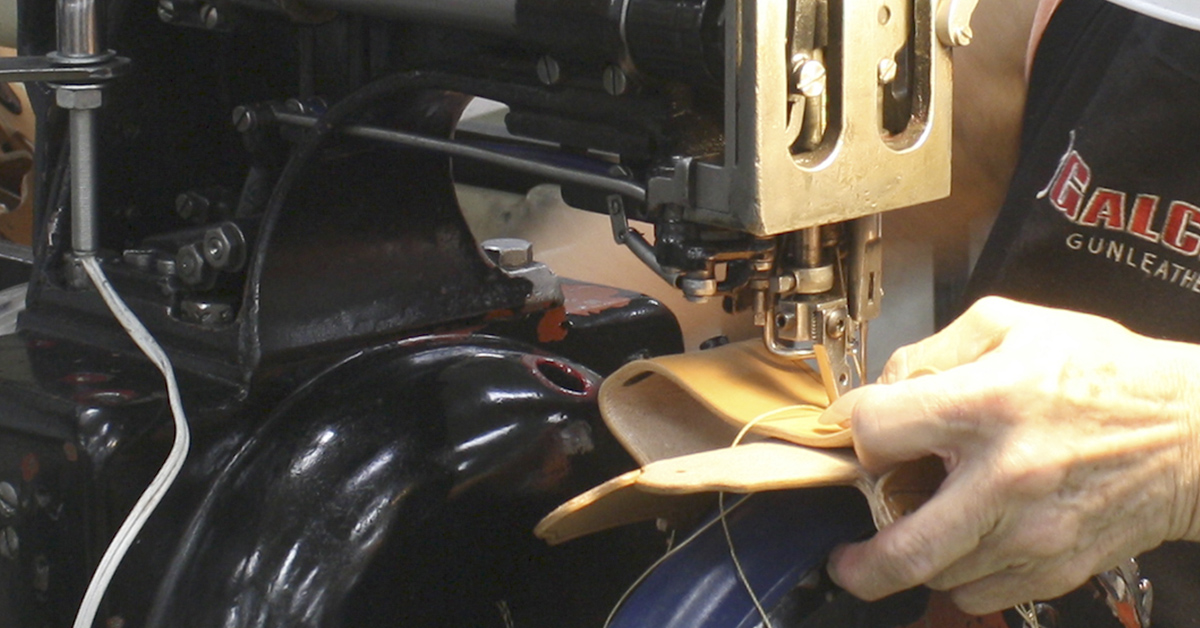
Acids used in leather production, and moisture attracted by any remaining salts, can rust pistols. Heat accelerates the damage. Petroleum oil deters rust but stains and weakens leather. Vegetable-tanned leather turns brass cartridge hulls and belt hardware green with verdigris; however, nickel-plated metal is not so affected. In general, it’s bad business to store metal in leather!



